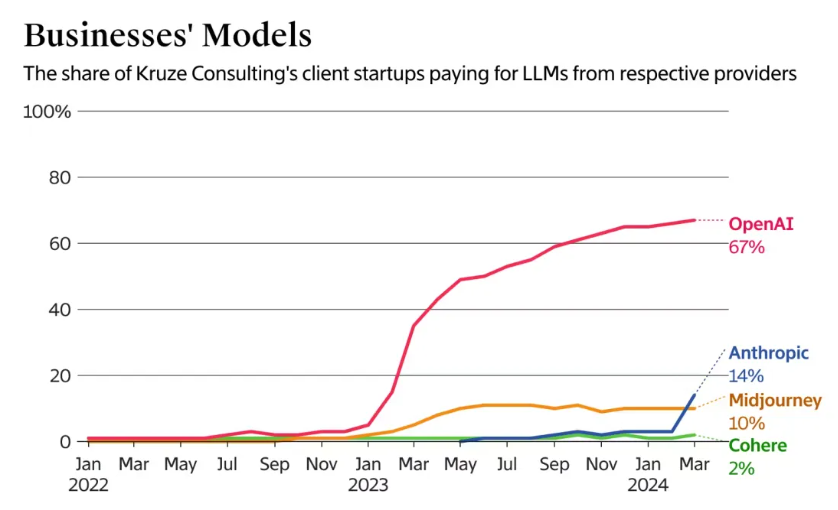OpenAI, the parent company of ChatGPT, has doubled its annualized revenue to US$3.4 billion in the past six months and has a valuation of US$86 billion. Its strong growth is mainly due to the widespread application of conversational AI and chatbots in the enterprise and personal fields. The company's recent personnel adjustments and the appointment of new CFO and CPO have been interpreted by the outside world as preparations for the IPO. However, OpenAI's chief technology officer also admitted that the advancement of its model is not much different from the public model, which has weakened its first-mover advantage to a certain extent and caused investors to worry about its future development prospects.
Webmaster’s Home (ChinaZ.com) News on June 14: OpenAI, the developer of ChatGPT, has doubled its annualized revenue in the past six months to US$3.4 billion, showing the rapid growth of its business . This growth is mainly driven by the application of conversational AI and chatbots in enterprise and personal work. OpenAI is valued at approximately US$86 billion, and its revenue mainly comes from chatbot subscription fees and API access fees.
The company recently made top management changes, appointing former Nextdoor CEO Sarah Friar as chief financial officer and Kevin Weil, the former head of product development at Twitter and Instagram, as chief product officer. These moves have been speculated to be preparations for a future initial public offering (IPO). OpenAI chief technology officer Mira Murati responded to IPO rumors at the Fortune Most Powerful Women dinner, saying the company is entering the next phase.
However, Murati mentioned in his speech that the artificial intelligence model of the OpenAI laboratory is not much more advanced than the public model, which may have an impact on investor confidence. As competitors with similar performance continue to emerge, people are beginning to question whether OpenAI's first-mover advantage can be sustained.

OpenAI's growth is also due to its cooperation with Microsoft, which receives a share of the AI models sold by OpenAI and sells OpenAI models to customers through the Azure cloud. Additionally, Apple plans to integrate ChatGPT into its products, which may further boost OpenAI’s development.
While OpenAI maintains its lead in LLM, the proportion of startups using multiple AI models is increasing, according to Kruze Consulting, suggesting that developers and industry practitioners may no longer be as reliant on a specific model provider as before. In addition, the performance of open source models is gradually approaching GPT-4, triggering discussions about whether the models will be commercialized.
Despite facing fierce market competition, OpenAI may still hold some advantages, such as offering an all-in-one package by bundling more AI products, and the much-anticipated potential release of GPT-5, which may significantly outperform existing models. The future of OpenAI will depend on how it responds to the challenges of market competition and technological innovation.
The future development of OpenAI is full of challenges and opportunities. Whether it can continue to maintain its leading position ultimately depends on its strategic layout and execution capabilities in technological innovation, market competition and business models. The release of GPT-5 and cooperation with giants such as Microsoft will be key factors.